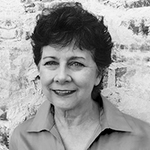Question
How often should I feed the baby?
Answer
Infants should be fed on demand, not on a schedule. The exception to this is if an infant has a medically prescribed feeding schedule, such as, "This infant gets three ounces every three hours." Then you must follow that schedule. Most infants are going to be hungry and need to eat about every three to four hours. They'll eat anywhere from three to eight ounces of breast milk or formula. Watch for signs of hunger, such as sucking on their fists or rooting actions. Some babies will suck on a pacifier then spit it out and start crying again. You'll get to know your infants and know if they are wet, fussy, lonely, or hungry, but let the infant decide when to stop eating. Watch for signs of fullness. He may just put his lips together, which is a way to say, "Nope, that nipple's not going back in there" or he may just decrease sucking or stop sucking or turn his head away. However, remember that if an infant has a medically prescribed feeding schedule, work with the parents and know what you should or should not be doing when feeding that infant.
This Ask the Expert is an edited excerpt from a course entitled, Feeding Infants, by Charlotte Hendricks, PhD.
